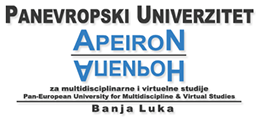 Modeling of Microwave-Assisted Extraction of Lycopene from Tomato Peels
Modeling of Microwave-Assisted Extraction of Lycopene from Tomato Peels
Modeling of Microwave-Assisted Extraction of Lycopene from Tomato Peels
Stefan Kuvendziev, Martin Stojchevski, Martina Andreevska, Violeta Lukanovska, Mirko Marinkovski, Kiril Lisichkov
Faculty of Technology and Metallurgy, Ss. Cyril and Methodius University in Skopje, N. Macedonia, mirko@tmf.ukim.edu.mk
ABSTRACT: Dry tomato peels were investigated as a natural source of lycopene in this study. Microwave-assisted
extraction (MAE) was used for the isolation of bioactive compound of interest. The MAE was performed at a microwave
power of 120, 230, and 385 W for a duration of 2, 5, 8, and 10 min. The concentration of lycopene in the
separated extract with n-hexane was quantified by UV/Vis spectrophotometer. The absorbance at 501 nm was selected
for the determination of lycopene content and the calculation of lycopene yield (mg/100 g). An adequate feedforward
artificial neural network (ANN) model with architecture 2-10-1, trained by the Levenberg-Marquardt (LM) backpropagation
algorithm was developed for modeling the MAE process and for the prediction of the lycopene yield.
The model predicted lycopene yield with a high coefficient of determination R2=0.9957 and low mean squared error
MSE=0.475. The response surface methodology (RSM) was successfully applied and combined with the ANN model
to optimize the MAE process with R2=0.9477 and a low mean absolute error MAE=1.84507. The analysis of variance
showed that extraction time and time-squared have statistically significant effects on the lycopene yield. The created
3D response surface showed that the optimum lycopene yield was 27.25 mg/100g of tomato peels at the microwave
power of 324 W and extraction time of 8.6 min.
extraction (MAE) was used for the isolation of bioactive compound of interest. The MAE was performed at a microwave
power of 120, 230, and 385 W for a duration of 2, 5, 8, and 10 min. The concentration of lycopene in the
separated extract with n-hexane was quantified by UV/Vis spectrophotometer. The absorbance at 501 nm was selected
for the determination of lycopene content and the calculation of lycopene yield (mg/100 g). An adequate feedforward
artificial neural network (ANN) model with architecture 2-10-1, trained by the Levenberg-Marquardt (LM) backpropagation
algorithm was developed for modeling the MAE process and for the prediction of the lycopene yield.
The model predicted lycopene yield with a high coefficient of determination R2=0.9957 and low mean squared error
MSE=0.475. The response surface methodology (RSM) was successfully applied and combined with the ANN model
to optimize the MAE process with R2=0.9477 and a low mean absolute error MAE=1.84507. The analysis of variance
showed that extraction time and time-squared have statistically significant effects on the lycopene yield. The created
3D response surface showed that the optimum lycopene yield was 27.25 mg/100g of tomato peels at the microwave
power of 324 W and extraction time of 8.6 min.
Keywords: landfill, leachate, environmental, pollution.
| Attachment | Size |
|---|---|
| Pages from QOL-Volumen 15_Issue 1-2 FEBRUAR 2024-WEB-3.pdf | 567.04 KB |
